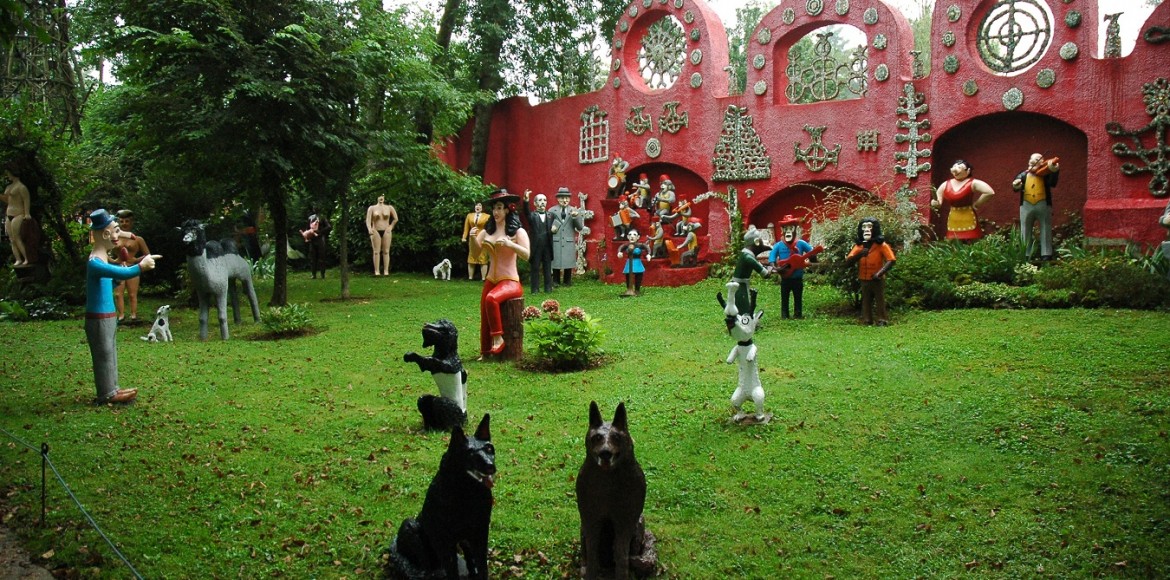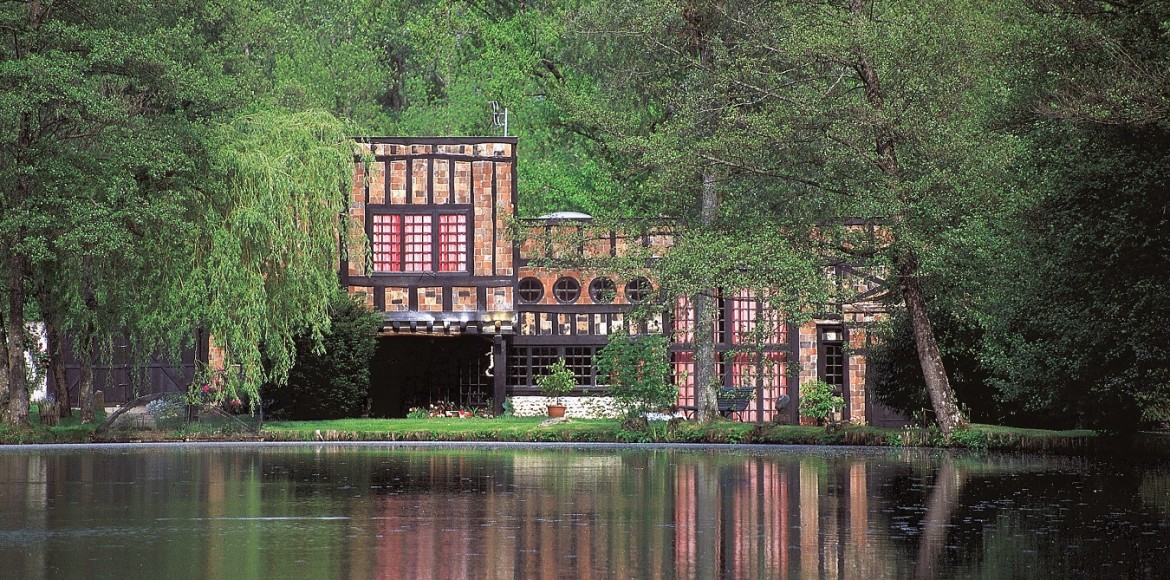Appellations are numerous in the world of art brut. “Marginal art”or “hors-les-normes art” range among those which can be used as generic terms. However, the name “hors-les-normes art” remains inseparable from Alain Bourbonnais’s collection. This appellation, which was suggested to him among others by Jean Dubuffet in 1972, refers to art whose norms differ from those of official art. Most often born from a strong urge to create, these works are made by autodidacts for whom creation can be seen as a labour of love or some sort of “re-creation”. These creations blur all artistic categories , dissolve borders as they stand at the junction of folk art, naive art, art brut , outsider art… Hors-les-normes is beyond norms.
The inhabited garden
June 6
The inhabited garden at La Fabuloserie was inaugurated in 1979. Designed by Alain Bourbonnais around an ornamental lake, this green space is adorned with sculptures , weather vanes. Faithful to their original presentation, The works are disposed around the lake just as they were originally : Petit Pierre’s amazing “manège”, Jules Damloup’s “Petite Afrique” and the life-size characters by Camille Vidal. The medallions by François Portrat are placed on a display-wall especially designed and created for them.
The museum-house
June 6
La Fabuloserie, which opened in 1983 to the public , was devised and completed by the architect Alain Bourbonnais so as to shelter his collection of “hors-les-normes art”. This appellation was suggested to Alain Bourbonnais by Jean Dubuffet, who wanted the name of “art brut” to be reserved for his own collection. It refers to out of the ordinary creations made by self-taught artists. After opening a gallery, the Atelier Jacob, in Paris 1972 and 1982, l’Atelier Jacob, Alain Bourbonnais decided to create, with his wife Caroline, un musée qu’il nomme « La Fabuloserie». L’espace se compose d’une « maison-musée » où sont exposées plus de mille créations allant des dessins de Yanko Domsic aux bourrages de Francis Marshall, and the amazing series of “Turbulents” by Alain Bourbonnais himself.
“With all the ingenuousness of the architect who was fed up with rational architecture and who dreamt of anarchitecture, Alain Bourbonnais created an initiating circuit, a labyrinth with surprise-rooms to be opened surreptitiously, at the risk of being filled with shudder and horror, such as the black room where Marshall’s “bourrages” lean and lie. You climb up steep and narrow flights of steps. You cross walls. All is strange. surprising. and unusual. All is provoking. All is spell-binding. "
Michel Ragon, writer, art and architecture historian, art critic.
























Les artistes de la collection permanente
Abel, Aloïse, Alpo, Amar, Andrault, Baloffi, Berni, Bertholle, Bordes, Bourbonnais, Buigues, Burles, Cammi, Chichorro, Contestin, Dalmaso, Damloup, Dereux, Domsic, Duhem, Eckenberger, Fillaudeau, Flechmuller, Galmiche (dite Sylvette), Geisel, Genty, Guivarch, Henay, Jaber, Jacqui, Jamet, Juva, Labelle, Lacoste, Landreau, Le Carré Galimard, Lécurie, Liban, Loli, Lortet, Mahaut, Marshall, Michel, Moiziard, Monchatre, Morel, Myriam, Nedjar, Negri, Nek Chand, Pelosi, Pesset, Petit, Petit Pierre, Podesta, Portrat, Ratier, Renaud d’Ampel, Reynaud, Ringel, Rosset, Roure, Sallé, Sendrey, Sol.
.

















